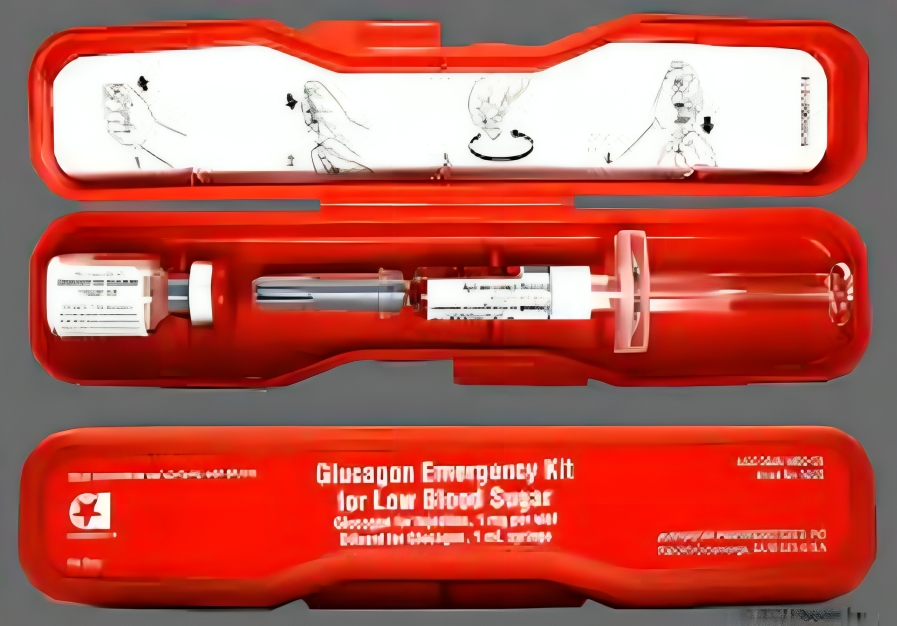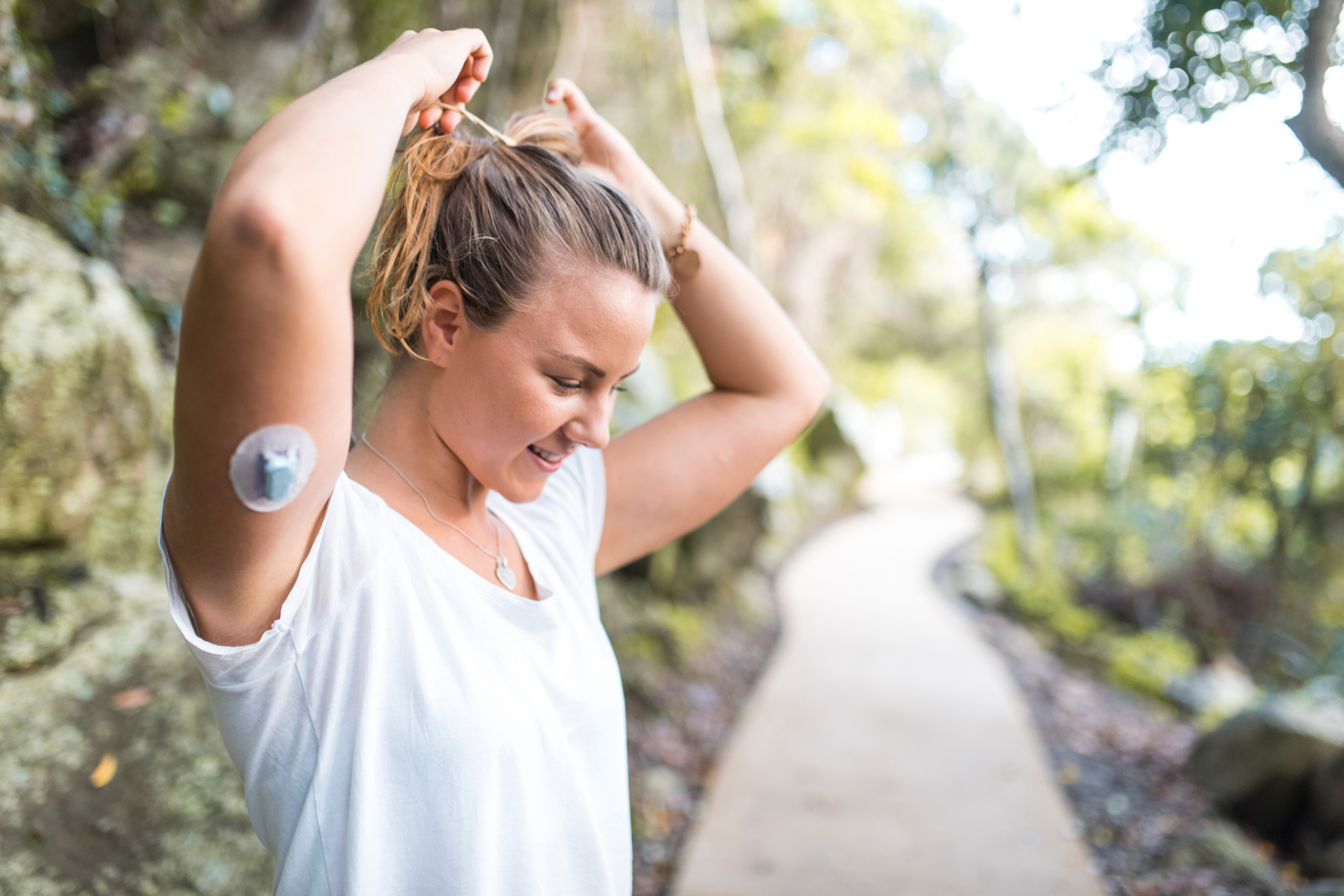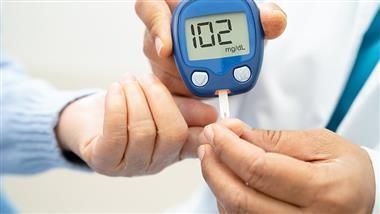Low Blood Sugar: Hypoglycemia 101
Key takeaways:
- Hypoglycemia (low blood sugar) happens when blood sugar drops below 70 mg/dL.
- Low blood sugar can often be treated by consuming carbohydrates, but more severe episodes – glucose levels below 54 mg/dL – require immediate medical attention.
- Checking glucose levels regularly with a blood glucose meter or continuous glucose monitor can help improve blood sugar management and prevent lows.
Hypoglycemia is one of the more common and feared complications of diabetes. Low blood sugar can have many causes, but people with diabetes are at higher risk.
Hypoglycemia is often seen among people who take insulin or certain diabetes medications (or taking too much). Changes to diet, exercise routines, and certain medical conditions can also trigger low blood sugar.
While some hypoglycemia episodes can be treated by eating carbohydrates, other events are more severe and require emergency glucagon or urgent medical attention.
What is hypoglycemia?
Hypoglycemia, or low blood sugar, is often defined as having a blood glucose level below 70 mg/dL. Though glucose is necessary for the body, the amount circulating in the blood must be tightly regulated. Too much or too little glucose in the blood can lead to hypoglycemia, hyperglycemia (high blood sugar), and long-term health complications.
Experiencing hypoglycemia is a challenge for the body; cells need glucose from the bloodstream to use for energy, and when blood sugar is low, there isn’t enough to use. There are three levels of hypoglycemia:
- Level 1: Glucose values less than 70 mg/dL
- Level 2: Glucose levels less than 54 mg/dL
- Level 3: Severe hypoglycemia (below 54 mg/dL with impaired mental and physical function)
Severe hypoglycemia occurs when the body can no longer function properly because glucose levels are too low. In these cases, low blood sugar can cause confusion or even loss of consciousness because there isn’t enough glucose for the brain to function adequately. Severe cases can be life-threatening and require immediate attention.
What causes low blood sugar?
Hypoglycemia is usually a result of diabetes treatment, often too much insulin in the body. People with type 2 diabetes who take insulin or sulfonylureas can also experience hypoglycemia, but it is more common among people with type 1 diabetes.
Here are some reasons why you might develop hypoglycemia:
- Taking too much insulin or other diabetes medications. Administering too much insulin for your body’s needs at the time is a common cause of hypoglycemia. Taking glucose-lowering drugs in combination with sulfonylureas or insulin can also lower blood sugar and increase your risk for hypoglycemia.
- People with type 2 diabetes taking sulfonylureas may experience hypoglycemia. Sulfonylureas stimulate insulin release from the pancreas; even if your glucose levels are in range it can lead to low blood sugar.
- Not eating enough food, particularly carbohydrates.
- Too much exercise at one time, particularly mild to moderate aerobic exercise. This is because exercise can increase your insulin sensitivity, which allows your muscle cells to take up glucose from the bloodstream.
- Illness, particularly if associated with vomiting, nausea, and diarrhea.
- Other medical conditions including liver and kidney disease, eating disorders, and certain hormone deficiencies.
Low blood sugar symptoms
Not everyone experiences low blood glucose the same way, but here are common hypoglycemia symptoms:
- Hunger
- Sweating
- Shaking
- Fast heartbeat
- Headache
- Trouble concentrating
- Fatigue
- Irritability
- Confusion
Low blood sugar can also affect your mental state; feeling confused, annoyed, without focus, or “out of it” can also be symptoms of hypoglycemia. During severe hypoglycemia, you may experience different symptoms that indicate that your brain doesn’t have enough glucose to properly function including:
- Confusion
- Combativeness
- Disorientation
- Loss of consciousness
Left untreated, severe hypoglycemia can lead to organ failure, seizures, coma, and death. While low blood sugar can be quite dangerous, many people with diabetes are able to recognize the signs and symptoms when glucose levels are trending low before severe hypoglycemia occurs.
What is hypoglycemia unawareness?
Some people have hypoglycemia unawareness, which is when you don’t experience or notice the warning signs of hypoglycemia. This can put you at risk for prolonged low glucose levels or severe hypoglycemia.
Several factors can increase your chances of hypoglycemia unawareness:
- Repeated episodes of hypoglycemia
- Going low while sleeping
- Exercise
- Drinking alcohol
- Having specific diabetes complications (like neuropathy)
- Having chronic kidney or liver disease
- Taking certain medications
- Age (hypoglycemia unawareness is common in people over age 65)
- Diabetes duration (people who have had diabetes for longer are more likely to experience it)
How to treat low blood sugar
If you notice that your blood sugar is low, it’s important to treat it right away to prevent it from dropping even further, even if you aren’t experiencing symptoms. Here are some strategies you can use if you’re experiencing low blood sugar.
Carry an emergency hypoglycemia kit
Keeping a low blood sugar kit is always a good idea. It should be easily accessible and with you at all times. Make sure people you’re with know what to do in a hypoglycemic emergency. Your kit should include:
- Glucose tablets or sugary snacks
- Glucagon, ideally a ready-to-use option like Baqsimi, Gvoke, or Zegalogue
- A CGM or blood glucose meter
- Emergency contact information
If you are not carrying a full emergency kit, make sure to at least have glucose tablets or sugary candies on hand.

Use the 15-15 rule
The 15-15 rule recommends eating or drinking 15 grams of carbohydrates (glucose tablets, four ounces of fruit juice, one tablespoon of sugar or honey, small hard candies, etc.) to raise your blood sugar.
Then check your blood sugar after 15 minutes. If it’s still below 70 mg/dL, have another serving of 15 grams of carbs. Repeat these steps until your blood sugar is at least 70 mg/dL.
Once your blood sugar is back in range, you might consider eating a snack with little or no insulin to make sure it doesn’t drop again. If you eat, make it a small, protein-rich snack and be careful of rebound high glucose levels.
If you use an automated insulin delivery (AID) system, discuss with your healthcare team if you should take less than 15 grams to correct a low glucose value.
Use emergency glucagon
If a person is vomiting, not able to swallow or take sugar by mouth, or is not fully conscious, this is a case of severely low blood sugar that requires treatment with glucagon.
Glucagon is a natural hormone that tells your body to release stored sugar into the bloodstream. Emergency glucagon is available by prescription and can be injected or administered into the nose.
The American Diabetes Association 2024 Standards of Care recommends that all people taking insulin or those at high risk for hypoglycemia be prescribed glucagon, preferably ready-to-use glucagon products like Baqsimi, Gvoke, and Zegalogue.
What to eat when your blood sugar is low
To avoid overtreating lows with too many simple carbohydrates and then facing a rebound high, it’s best to have go-to automatic corrections for hypoglycemia that are quantity-limited and unappealing to overeat.
Glucose tablets and candies like Smarties are predictable, relieve low blood sugar symptoms quickly, and are hard to overeat. Some people with diabetes count out jelly beans, mini-Swedish Fish, gummies, or hard candy and eat the exact amount that will help their blood sugar. Others take a specific amount of juice or another sugar-containing drink.
How do you know how much of your correction to consume? Similar to the 15-15 rule, the only way to discover exactly how much of your go-to correction your body needs is by checking your glucose levels, eating a source of sugar that has been measured out, and then checking again in roughly 15 minutes. This can help you adjust the amount of sugar to raise your glucose levels to your target (say, 100 mg/dL), but not overshoot.
Do not use a low as a reason to eat treats – this can cause your blood sugar to spike later. Plus, it connects a food reward (treat) with something you want to avoid (going low), which is an easy way to develop a bad habit.
Can continuous glucose monitoring help with low blood sugar?
A continuous glucose monitor (CGM) measures the body’s glucose levels in real time by sensing the amount of glucose present in tissue fluid.
CGMs can sound alerts when glucose levels drop or rise below a certain threshold or are predicted to do so soon. This can be especially helpful for people who experience hypoglycemia unawareness, nighttime low blood sugar, or frequent hypoglycemic events.
CGMs also allow you to share your blood glucose readings with loved ones and your healthcare team in real time so they can let you know or help you out if your blood sugar starts to drop.

The bottom line
Hypoglycemia is a risk for anyone with diabetes who uses insulin, but there are many steps you can take to prevent low blood glucose and be prepared in case of severe hypoglycemia. In particular, newer diabetes technology – like CGMs and AID systems – can help improve blood glucose management and prevent lows.
If your blood sugar has dropped below or is trending towards 70 mg/dL, it can often be treated by consuming something that raises blood sugar quickly, typically fast-acting carbs. More severe cases require immediate medical attention or the assistance of another person, which is why it’s important to learn and recognize the signs of hypoglycemia.
Healthy Bites















